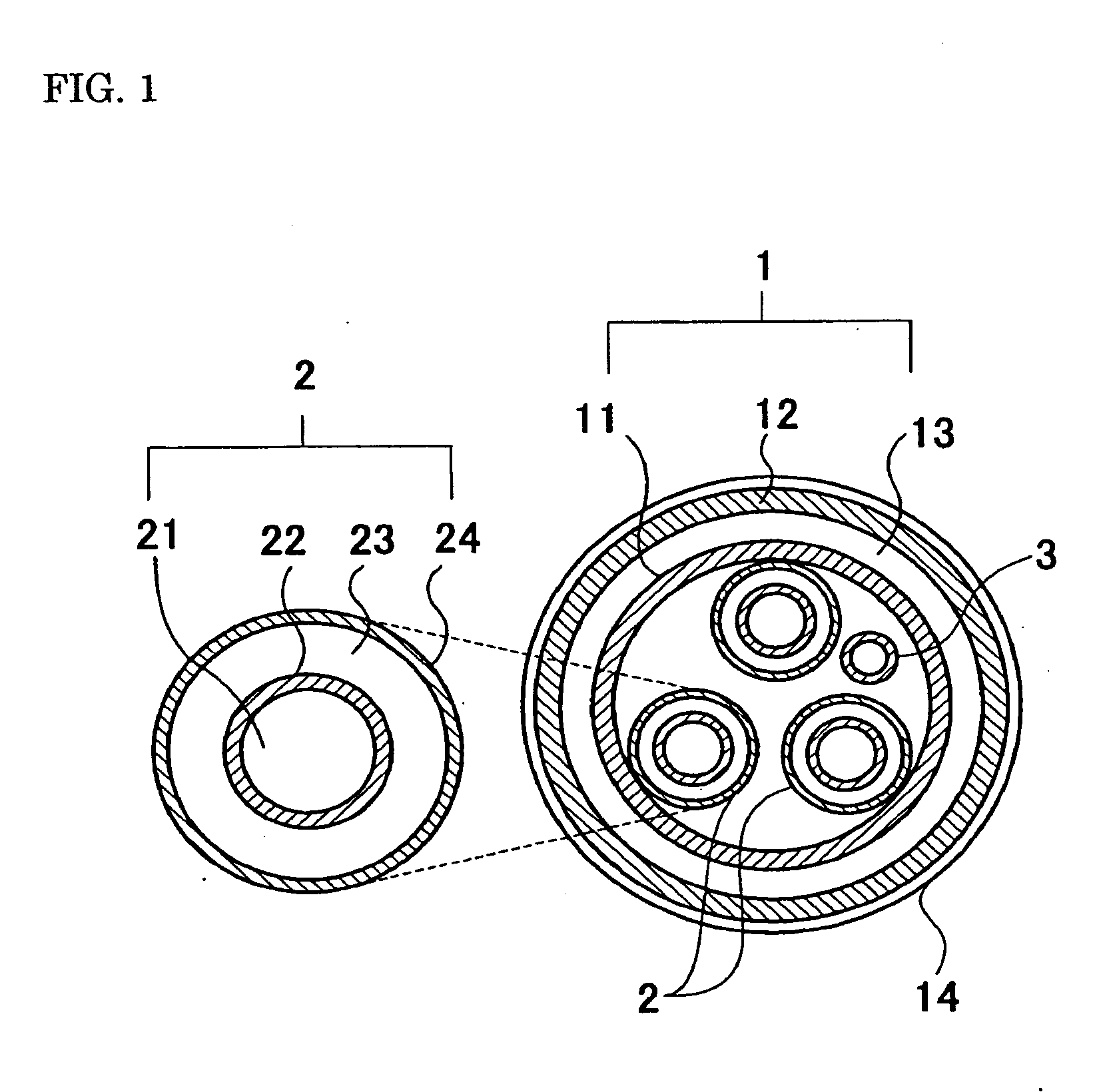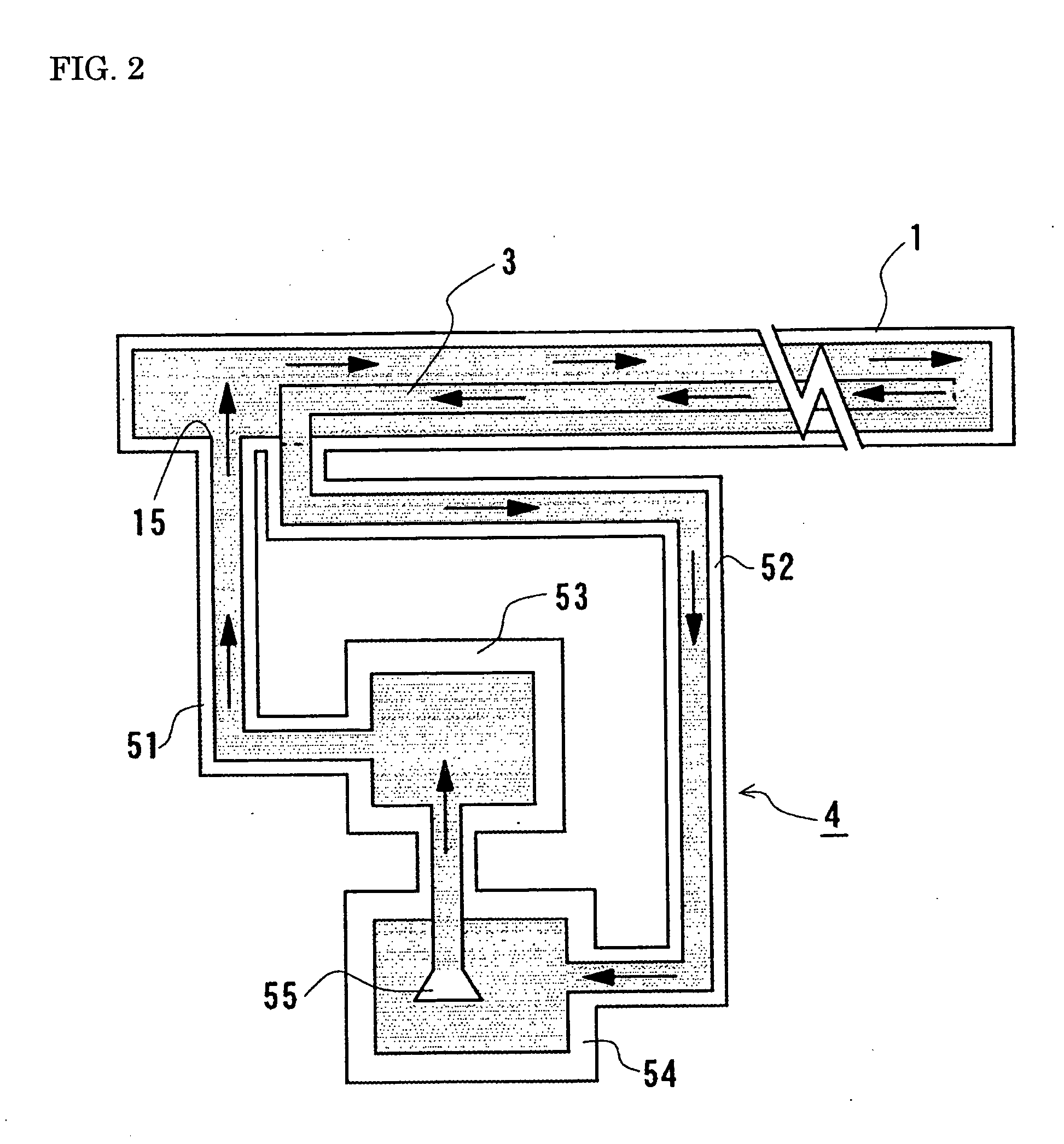Superconducting cable
a superconducting cable and cable technology, applied in the direction of superconductor devices, apiculture, capacitors, etc., can solve the problems of high bending-rigidity of pipes, complicated structure, and increase so as to reduce the heat loss of coolan
- Summary
- Abstract
- Description
- Claims
- Application Information
AI Technical Summary
Benefits of technology
Problems solved by technology
Method used
Image
Examples
Embodiment Construction
[0026] Hereunder, an embodiment of the present invention will be described. A superconducting cable of the present invention can be used as an alternating current (AC) superconducting cable or a direct current (DC) superconducting cable. Both an AC superconducting cable line and a DC superconducting cable line can be formed using the superconducting cable of the present invention.
[0027] A cable core used in the present invention includes, sequentially from the center, for example, a former, a superconducting conductor, and an electrical insulation layer.
[0028] Although the former may be a solid type using metal wires stranded together or a hollow type using a metal pipe, the present invention is suitable for the solid former.
[0029] When the former is a solid type, stranded metal wires, such as stranded copper wires, may be used considering the mechanical properties of the cable. When metal wires are used, it is desirable to insulate the metal wires in order to reduce eddy current...
PUM
| Property | Measurement | Unit |
|---|---|---|
| superconducting | aaaaa | aaaaa |
| electrical | aaaaa | aaaaa |
| impedance | aaaaa | aaaaa |
Abstract
Description
Claims
Application Information
 Login to View More
Login to View More - R&D
- Intellectual Property
- Life Sciences
- Materials
- Tech Scout
- Unparalleled Data Quality
- Higher Quality Content
- 60% Fewer Hallucinations
Browse by: Latest US Patents, China's latest patents, Technical Efficacy Thesaurus, Application Domain, Technology Topic, Popular Technical Reports.
© 2025 PatSnap. All rights reserved.Legal|Privacy policy|Modern Slavery Act Transparency Statement|Sitemap|About US| Contact US: help@patsnap.com



